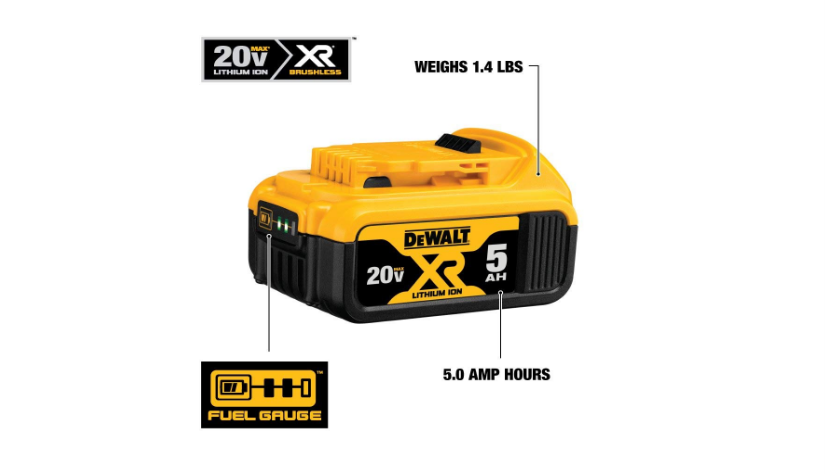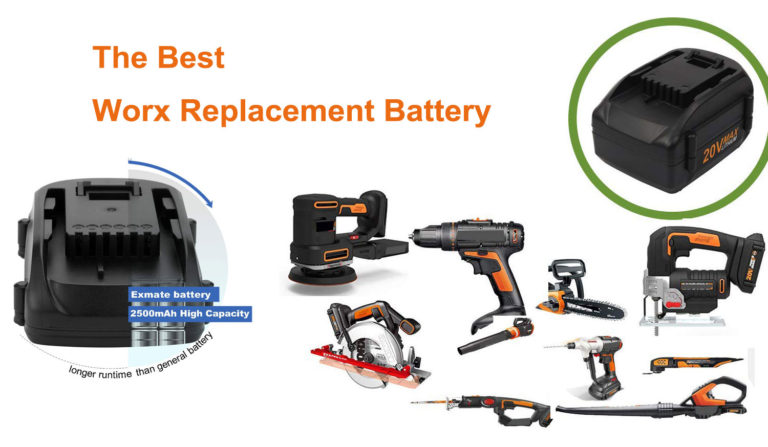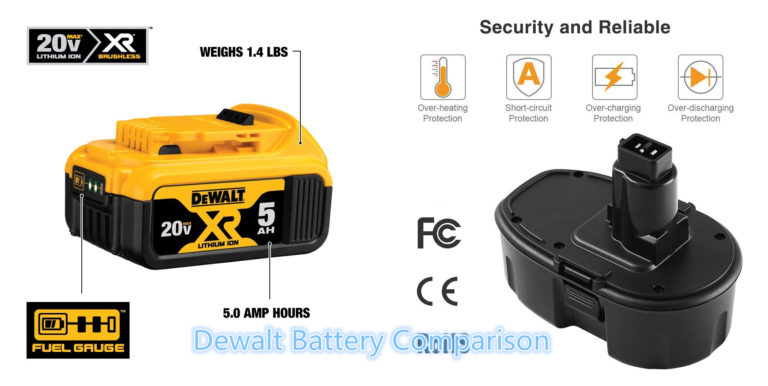Convenient and easy as power tools may be, they can be quite dangerous if something goes wrong when you least expect it. The last thing anyone would want when operating a powered hand tool is an injury. Now, the best way to avoid this would be to ensure everything works right for any damages before using it which brings us to today’s main agenda.
As a safety precaution, it would be a good idea to check the voltage of your power tools battery and the good thing is that this can easily be done using cheap and basic electrical equipment.
Whether you are using a corded or a cordless power tool, you’ll know, by the time you are done with this article how to best take voltage measurements of your power tools.
Tips on how to best inspect your power tools
The best way to use your power tool and to ensure it is in the perfect shape for as long as possible is inspecting it often. Here are some things you should consider doing as you use them.
- Always check for any faulty triggers and damaged switches on your tools
- If you’re using a corded power tool, ensure you check that the cord is not worn out- watch out for frays and cracks
- Ensure that the housing and body of your power tool are intact- they should both be free of any cracks
- For corded power tools, be sure to check that the plugs are neither missing nor should they have faulty prongs
- If any auxiliary handles are present on your tool, be sure to verify that they’re properly installed
Checking the battery of your cordless drill
 Everyone definitely does appreciate the simplicity and definitely lots of trouble that we are saved from when using a cordless drill. It would, therefore, be rather frustrating if you couldn’t be able to troubleshoot your drill’s battery when you desperately need to do so.
Everyone definitely does appreciate the simplicity and definitely lots of trouble that we are saved from when using a cordless drill. It would, therefore, be rather frustrating if you couldn’t be able to troubleshoot your drill’s battery when you desperately need to do so.
So, just in case your battery does not hold a charge for as long as it is needed to, you may either need to replace it which is normal. On the other hand, the battery may simply be damaged and it is only with the best multimeterthat you can be able to test them to find out whether or not they need to be replaced.
Take a look below at the step by step procedure you should take while troubleshooting your battery.
1. Ensure the battery has some juice.
The very first thing you’ll want to do is ensuring your battery has some charge. The recommended span of time to leave it in its charger is 1 hour after which it should have enough power to run your power tool. As a matter of fact, you can try turning on your drill and see whether it runs.
2. Set up the multimeter
Once you have the battery in the power tool, the next thing you’ll want to do is setting the multimeter up in order to take the voltage measurements.
Here’s how to go about this:
- The first thing you should check is ensuring the black probe is in the COM port and the red one in the mAVΩ
- With the probes plugged in, check to voltage reading of the battery then go ahead and turn the dial to a higher measurement than what the battery is rated at. For instance, if it is an 18V battery, turn the dial to 20V. If you have the dial at the wrong position, you’ll see the wrong reading on the display. Now that was the hard part, let’s take a look at what’s left.
3. How to set the probes right
The next thing you should do after setting the dial right is picking your probes and after doing so, place the red probe on the positive terminal and then have the black probe on the negative terminal.
4. Take a look at the voltage reading
If you’ve done everything correctly so far, you should be able to see the voltage reading on your multimeter’s LCD display.
Now regarding the readings, it might be confusing though normal to see a reading that is higher than what the battery is rated at if it was fully charged. For a 17-volt battery, it should indicate 18 volts. If it’s otherwise, then this is an indicator your battery needs to be replaced which you should do promptly
5. When to take your battery for a repair
In some cases, the voltage indicated on your multimeter may be high but then, the battery may not be able to hold a charge. In such a case, you’ll have to take it to a tool repair where it should be put through thorough testing and repair.

Testing the power tool charger
Though it is mostly the case that your battery may be faulty, the problem, at times may be in the charger that you use for your power tool.
This may be indicated by your battery not accepting a charge anymore when it should in which case it would be a good idea to test the power tool charger with a standard multimeter. Doing this is quite easy. Here’s how you should go about it.
1. Check the voltage rating
Having your probes plugged in as instructed when you were testing your battery, go ahead and check the voltage reading. This shouldn’t be hard to find since it is indicated either on the battery, the drill itself or the charger.
2. Set the dial right
The next thing you’ll want to do is turn the dial to the right position just the way you’d do when testing the battery voltage. Basically, have it set to the next highest setting to that which your power tool is rated at. In most cases, this should be 24 volts.
Doing otherwise would greatly compromise the readings you get from the multimeter display.
3. Taking the readings
With the dial set and the probes plugged in right, you’re clear to take the voltage measurements. In order to do this, go ahead and plug in the charger into an electric outlet.
Have the red probe of the meter and the black one to wither probe of the charger. You don’t have to worry about polarity when measuring the voltage of your charger.
4. Observe the readings
For a charger that is functioning well, the multimeter reading will be a few tenths of the battery’s voltage capacity. In the event that there is no reading at all produced on the meter, this should be an indication that the charger is faulty.
Why is the voltage reading of a power tool significant?
Voltage is normally a measurement of power when it comes to tools such as electric drills and other power tools. the general rule of thumb when it comes to voltage readings is that the higher this is, the stronger the drill will be while in use and the same goes for the price.
A higher voltage also means more weight to deal with so if you have to get one with a high reading, it should be worth it. These normally feature more usage options, settings and allow for the attachment of different sized bits.
Which voltage measurement should you go for?
When it comes down to choosing a drill that’s perfect for you, there are lots of things to consider in order to know what will work best.
For the common household tasks, it’s recommended that you go for a low-powered one and as a matter of fact, a 9-volt drill should have you get by just fine. Larger projects, on the other hand, demand that you go for a higher-powered drill that has got the torque power that’ll go through harder surfaces- a 14-volt drill would do just fine.
It would be wise to step things up a little bit from the 14-volt drill if you’ll be using yours in a workshop especially for DIY applications.
Why go for the cordless power tools?
When choosing a power tool, it’s all about convenience which in this case is a term with a really wide scope. With a cordless power tool, you get to enjoy portability much better. In addition to this, the power rating you get on a corded drill may be similar to what you’ll have on a cordless power tool.
As convenient as a cordless drill may be to take with you on the go, it does not offer as much reliability as a corded one. The battery power may wear down with time and you’ll end up losing power much faster. It’s therefore always a good idea to invest in what you’ll really need depending on your application of use.
Final verdict
There you have it all- everything you need to know about taking the voltage readings of your power tools. For the sake of your own safety and the longevity of your power tool, knowing how to take the battery and charger voltages is mandatory whether you need one for long or short periods of time.




